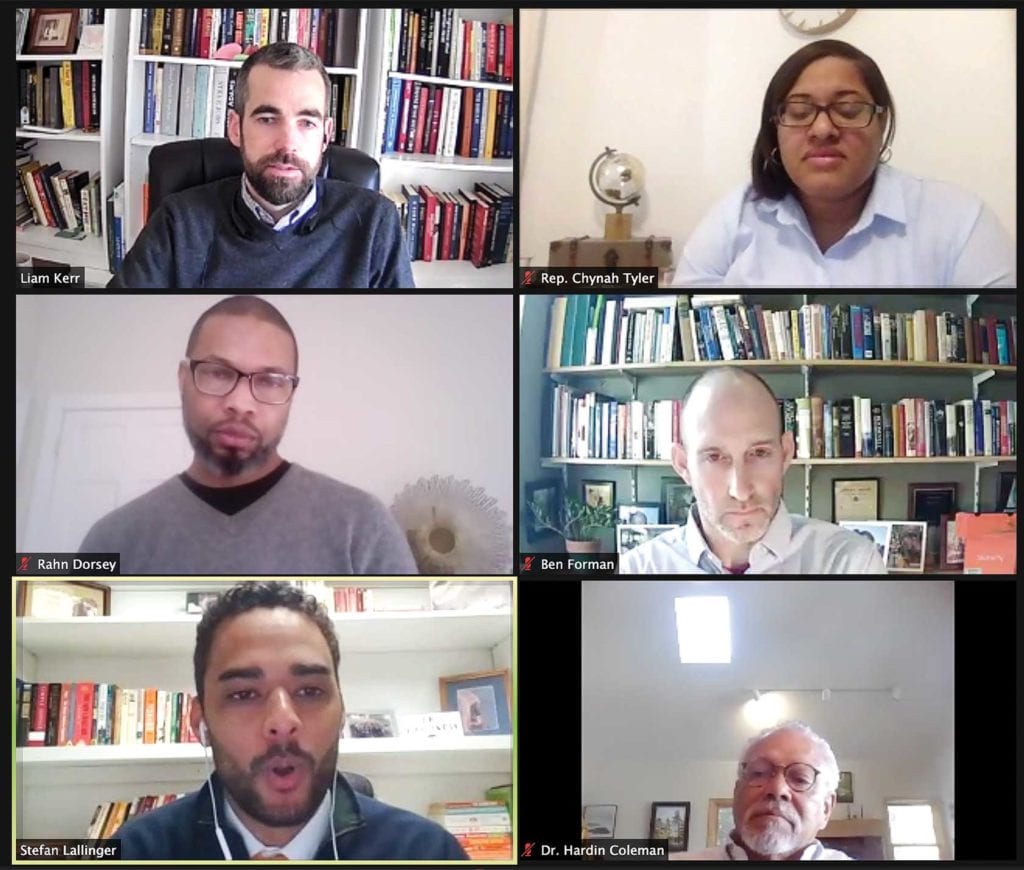Forum examines Boston-area school segregation
Segregation, unequal allocation of resources remain challenges

The Policy for Progress group in Massachusetts is taking a closer look at the problem of segregated schools. Its recent “Commonwealth Fault Lines” study compares pairs of neighboring Massachusetts cities, including Boston and Needham. In a webinar on Jan. 26, hosted by MassINC, researchers and legislators concerned about the issue discussed how segregation has increased over the years and methods to reduce it.
While integration is important, the discussion revealed that integration without proper resources can prove to be a problem.
“Throughout Boston, we’ve created integrated neighborhoods that haven’t led to integrated schools,” said Ben Forman, research director at MassINC. “So we need to really focus on what the school climate in this context of inequality that is going to create places where everybody feels valued.”
The comparisons between Boston and Needham are stark. Needham’s population is 76% white, with 5% of its total population experiencing economic disadvantages. On the other side, Boston is 45% white and 58% of its total population is economically disadvantaged. Boston’s students have higher needs and struggle to pass standardized tests, and the city has lower graduation rates.
Despite the city being racially diverse, it’s segregation that reinforces these problems, panelists said. In 1998, the percent of Boston schools classified as “intensely segregated” was 46%. By 2018, that number went up to 60%.
“We’ve got a lot of work to do in the context of schools,” Forman said. “You have parents that come from very different backgrounds, and they will have to come together to feel equally respected and heard.”
It will take a real commitment at the building level, district level and state level, Forman added.
Rahn Dorsey, former chief of education for the city of Boston, spoke on the panel about looking back on the city’s history of segregation in order to move forward. He warned that creating school communities requires intentionality, to prevent privileged populations from dictating the culture.
“We also had a phenomenon in the ’80s and ’90s where middle-income families of color left the cities as well, continuing to drain and undermine the diversity of income in cities and schools,” Dorsey said. He explained that this led to a narrative that public school systems and urban schools are the “systems of last choice.”
The problem is also intersectional: Policy changes in housing, urban mobility and employment may be able to change the culture in schools so that students are treated equally.
Dorsey said, “That, then, means that the solutions may be solutions that are born out of adjacency, and we’ve got to work in some of these other policy areas to really address these things.”
Dr. Hardin Coleman, a member of the Boston School Committee and former dean of Boston University’s School of Education, agreed with Dorsey’s analysis.
“These communities of white people, as Rahn has pointed out, have worked to preserve a de facto segregation, a reality with which we deal today,” Coleman said.
Coleman sought to keep the conversation centered on resources, reminding the group that mixing races doesn’t automatically lead to better performance.
“Places like Boston tend to spend an extraordinary amount of money, moving kids around with little systemic effect on positive academic performance. In fact, when you review the literature on how schools improve their ability to close achievement opportunity gaps, integration is not identified as a primary strategy,” Coleman said.
Though integrated schools outperform segregated schools, Coleman said, the difference is in the resources.
The Commonwealth Fault Lines full report addresses more of the historical buildup to the segregation Massachusetts experiences now and highlights four other pairs of cities similar to Boston and Needham. It also demonstrates how Massachusetts registered voters view the situation.
According to an August 2020 Change Research poll, voters think that segregation has lessened over time, even though it hasn’t. Still, they are concerned about the problem and want the state to do something about it. Policy For Progress is treating the Commonwealth Fault Lines study as the beginning of a conversation to address the disparities in diverse cities. But this conversation, they write, must “center and be led by those communities for whom the system has been set up to deny opportunity.”






